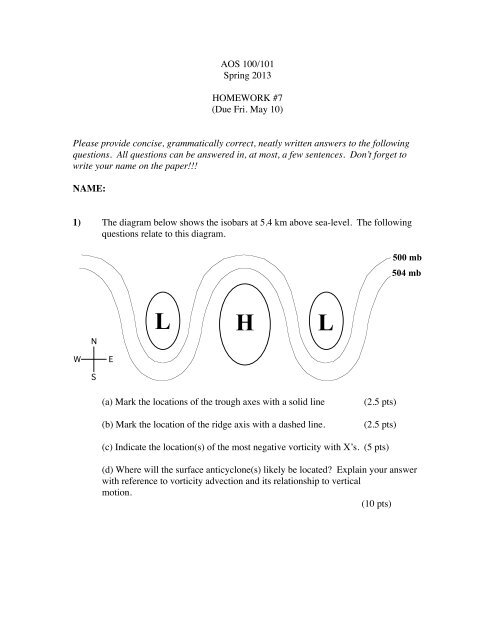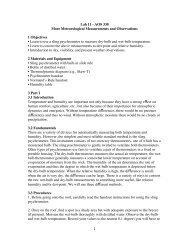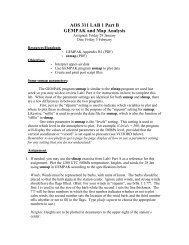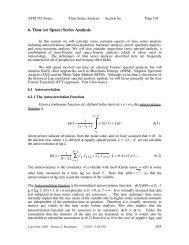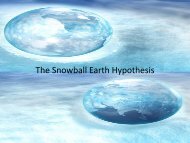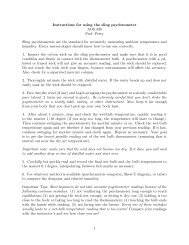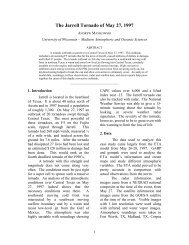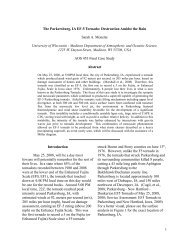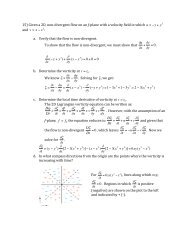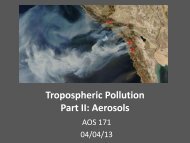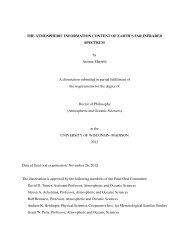AOS 100/101 Spring 2013 HOMEWORK #7 (Due Fri. May ... - Marrella
AOS 100/101 Spring 2013 HOMEWORK #7 (Due Fri. May ... - Marrella
AOS 100/101 Spring 2013 HOMEWORK #7 (Due Fri. May ... - Marrella
Create successful ePaper yourself
Turn your PDF publications into a flip-book with our unique Google optimized e-Paper software.
<strong>AOS</strong> <strong>100</strong>/<strong>101</strong><strong>Spring</strong> <strong>2013</strong><strong>HOMEWORK</strong> <strong>#7</strong>(<strong>Due</strong> <strong>Fri</strong>. <strong>May</strong> 10)Please provide concise, grammatically correct, neatly written answers to the followingquestions. All questions can be answered in, at most, a few sentences. Don’t forget towrite your name on the paper!!!NAME:1) The diagram below shows the isobars at 5.4 km above sea-level. The followingquestions relate to this diagram.500 mb504 mbNLHLWES(a) Mark the locations of the trough axes with a solid line (b) Mark the location of the ridge axis with a dashed line. (2.5 pts)(2.5 pts)(c) Indicate the location(s) of the most negative vorticity with X’s. (5 pts)(d) Where will the surface anticyclone(s) likely be located? Explain your answerwith reference to vorticity advection and its relationship to verticalmotion. (10 pts)
2) The diagram below represents a sequence of surface cyclones and anticyclones inthe Northern Hemisphere.NWES(a) Draw the circulation associated with each region of High and Low pressure.(5 pts)(b)We refer to east/west winds as zonal winds and north/south winds asmeridional winds. By concentrating on the meridional winds between adjacenthighs and lows, explain how this train of extratropical weather systems helpsalleviate the energy surplus/deficit condition we discussed with respect to Fig. 2.9in thebook. (15 pts)


